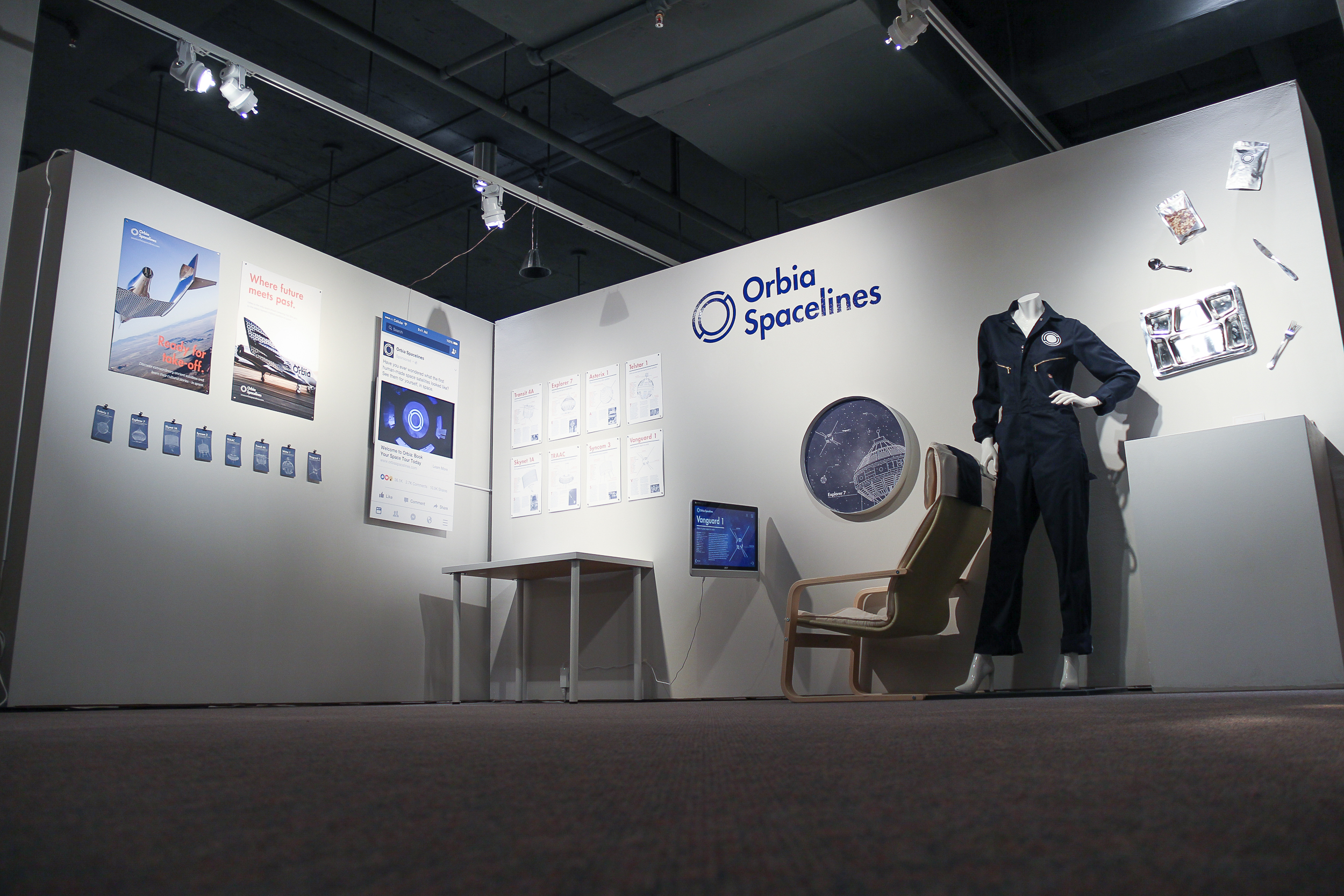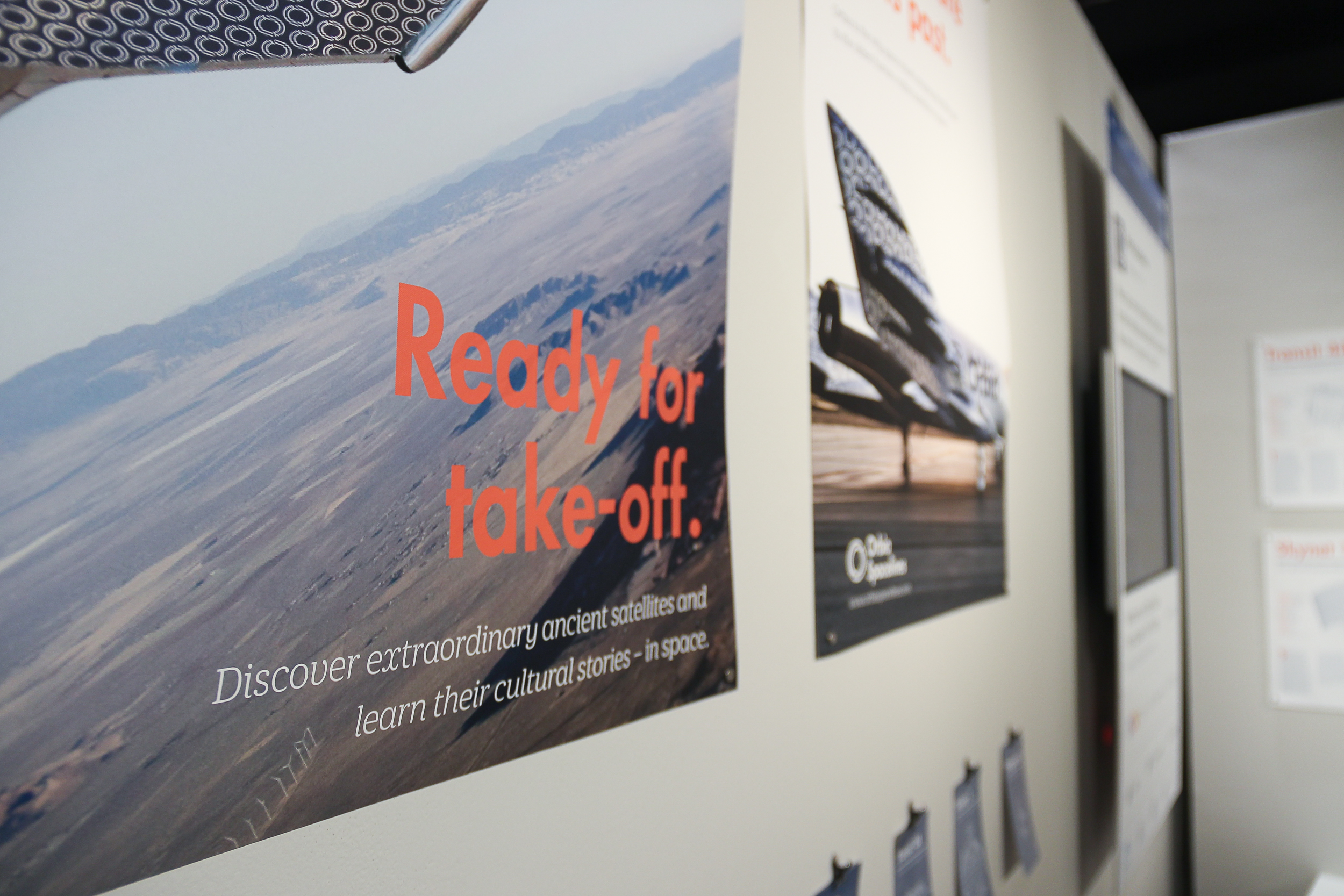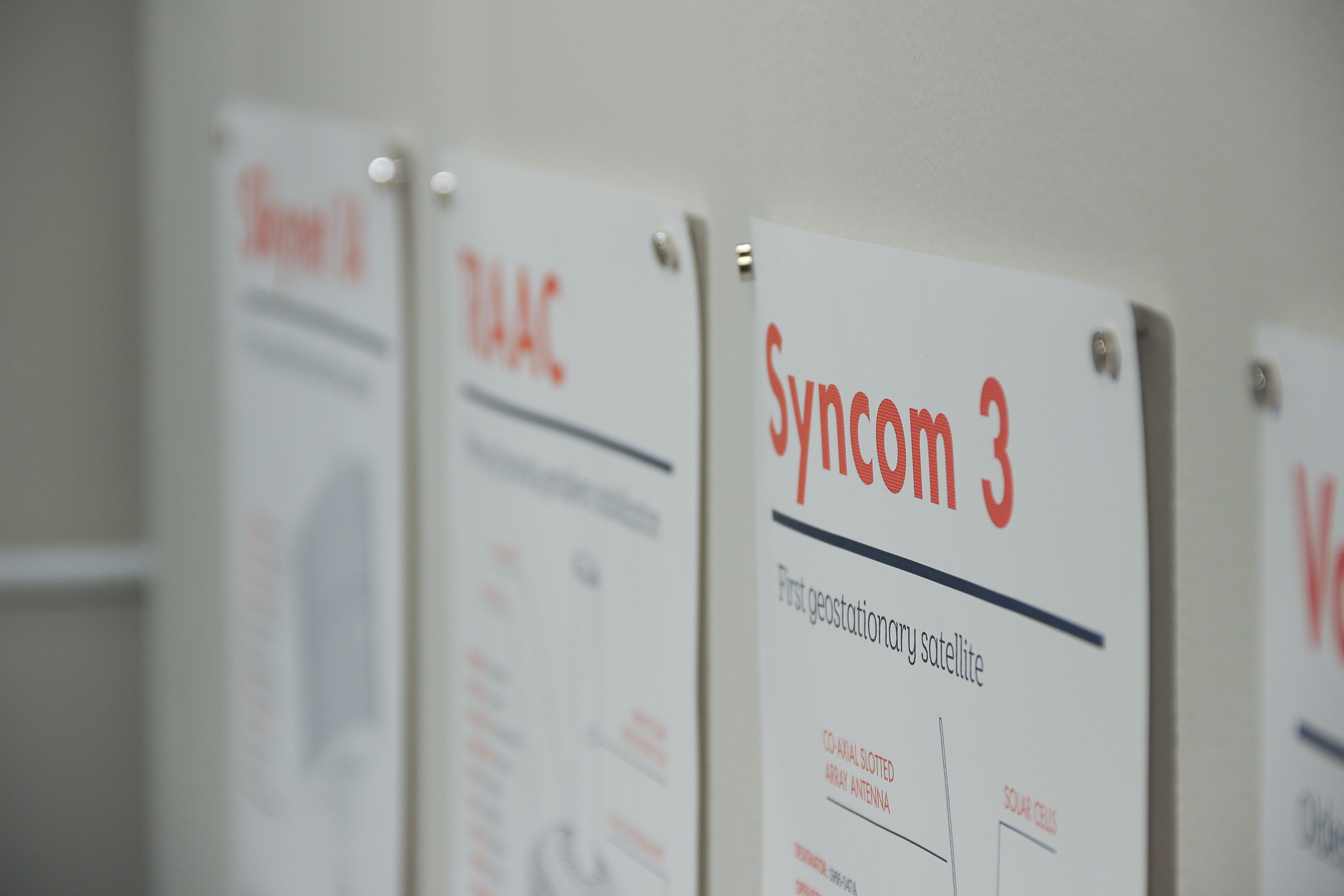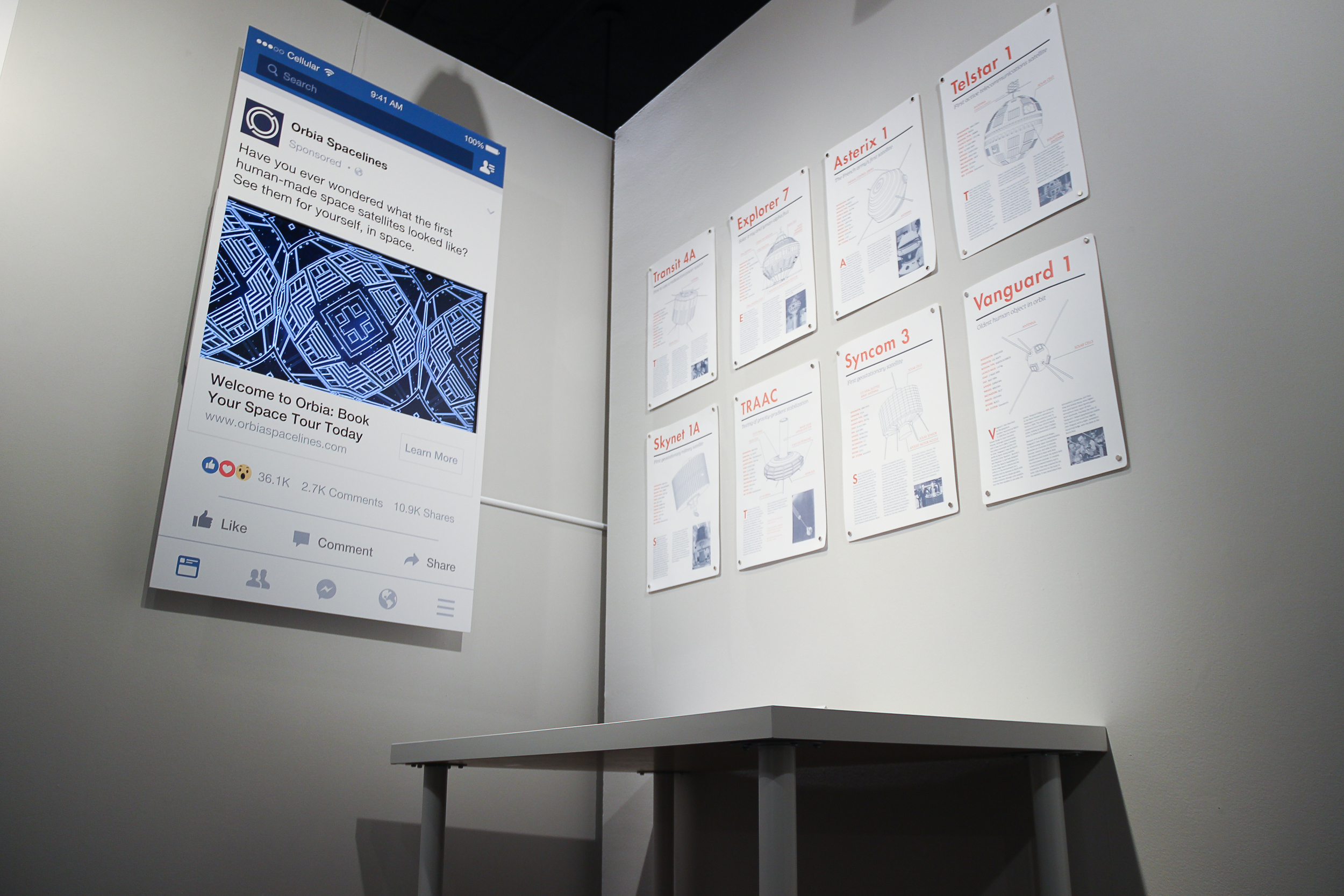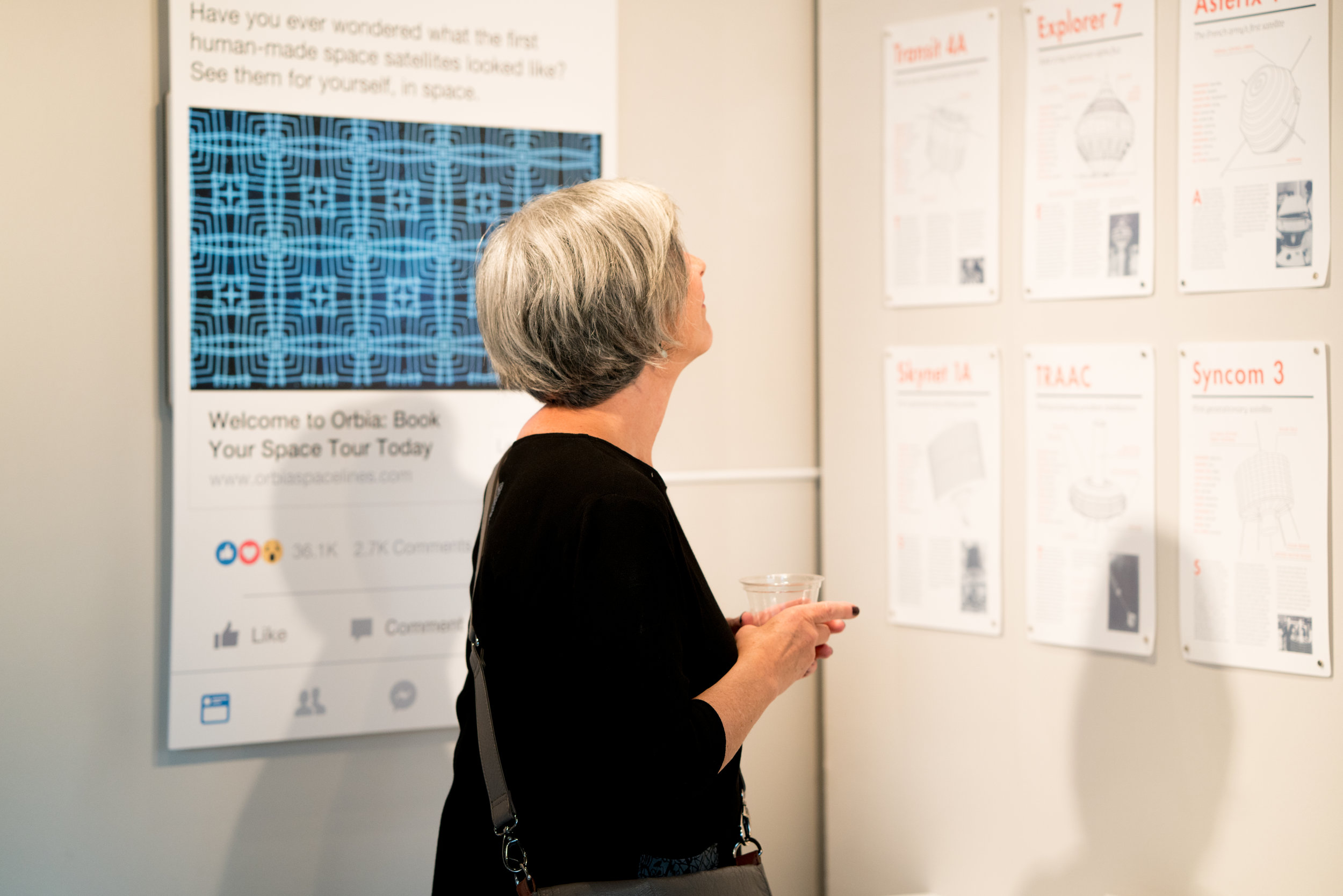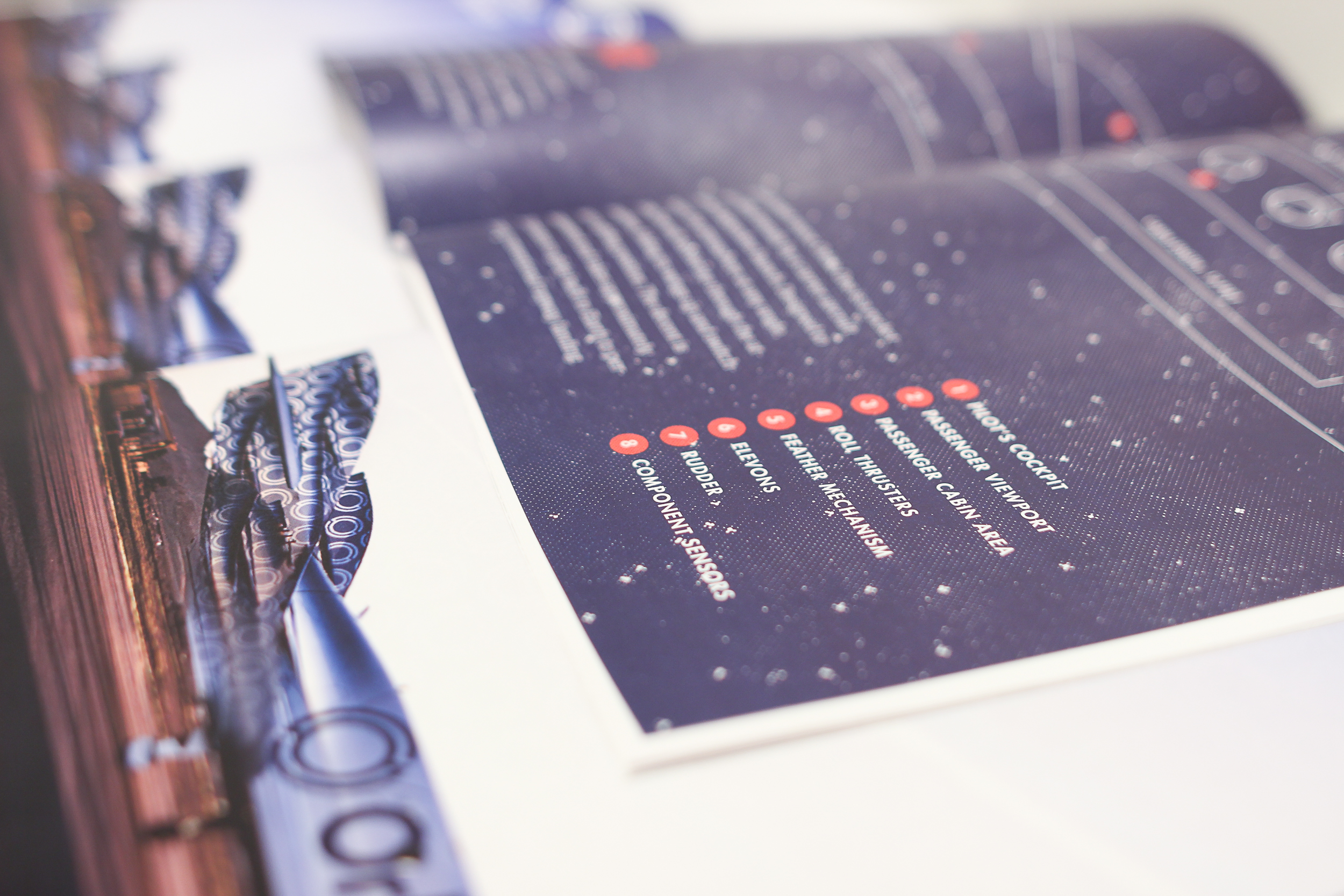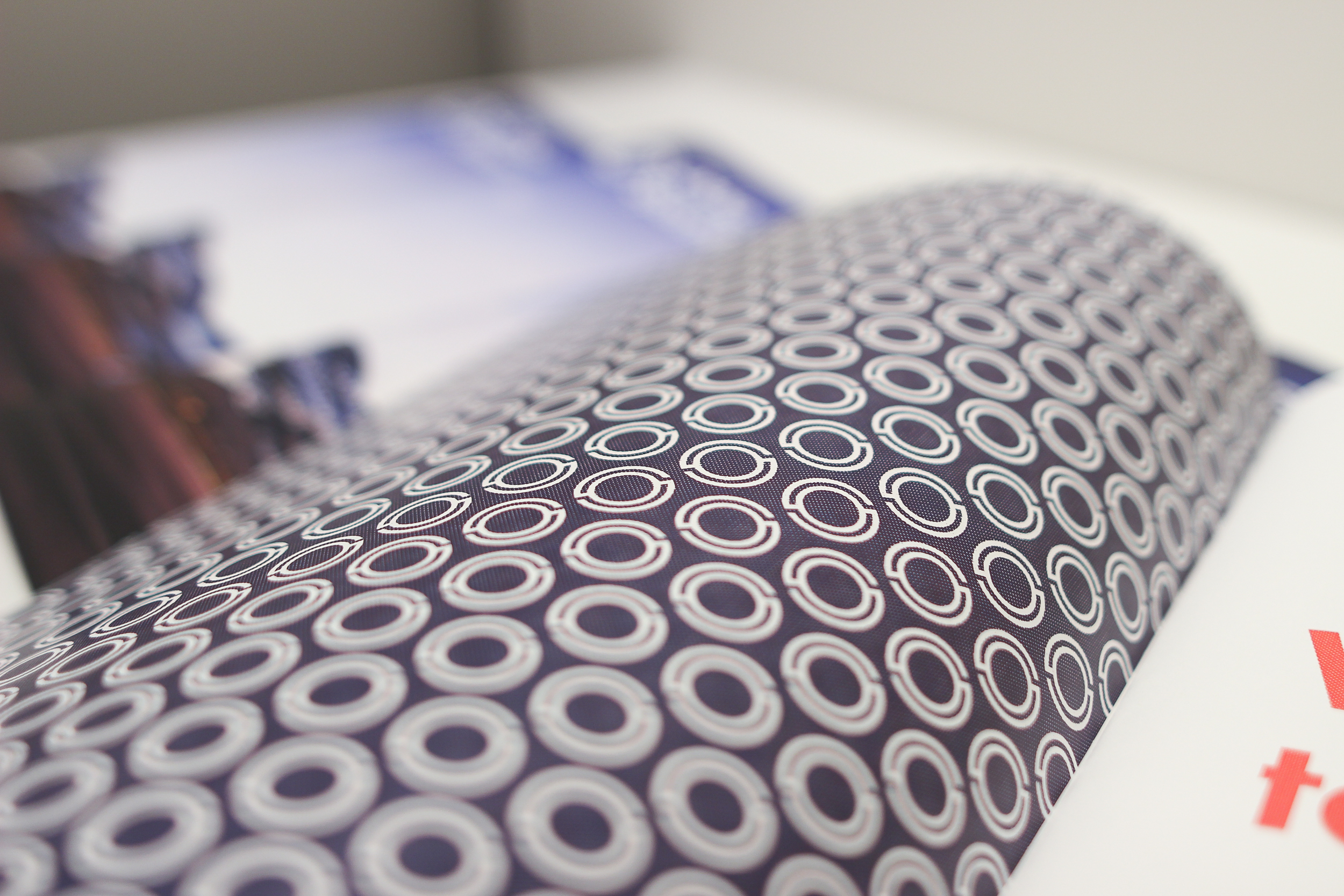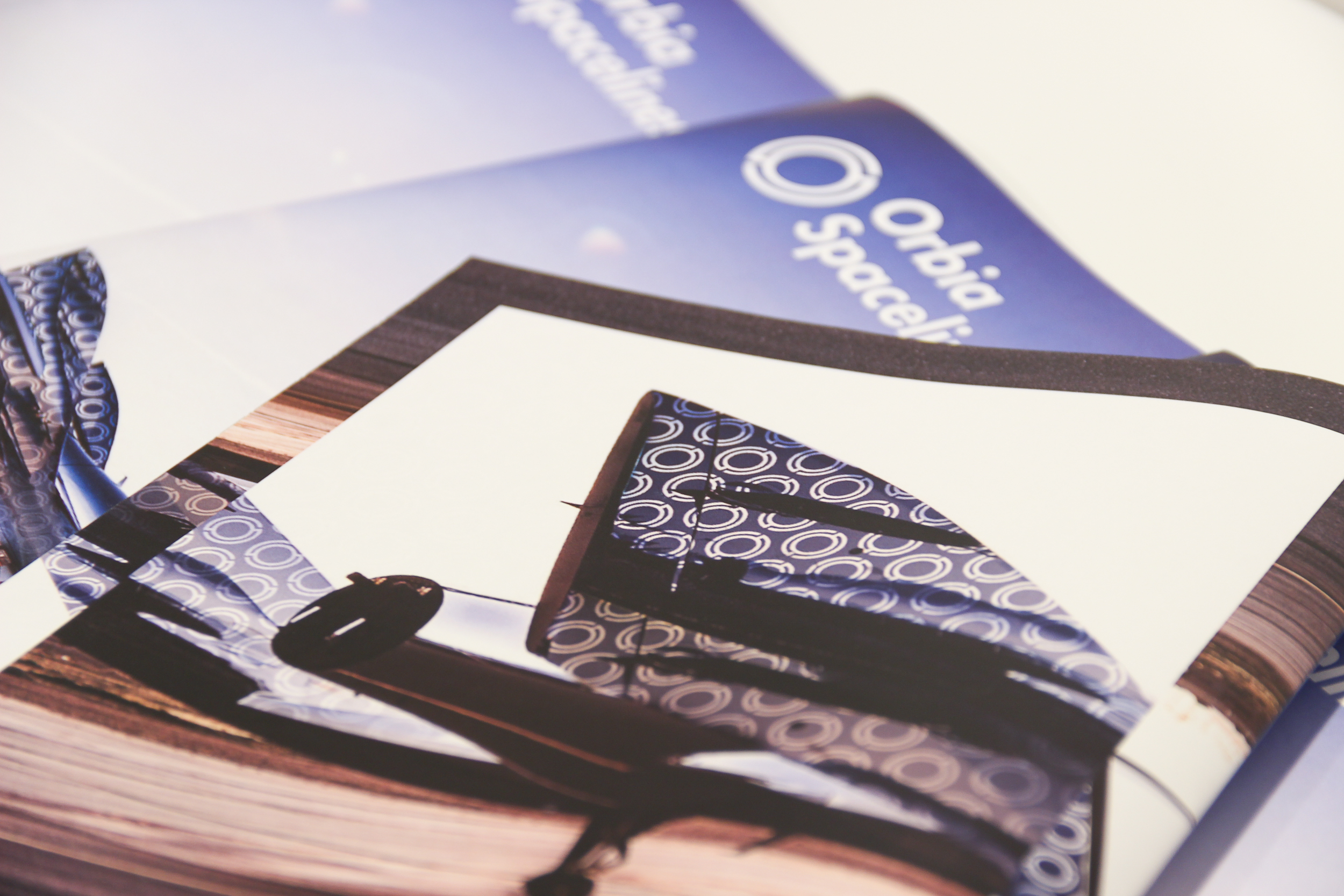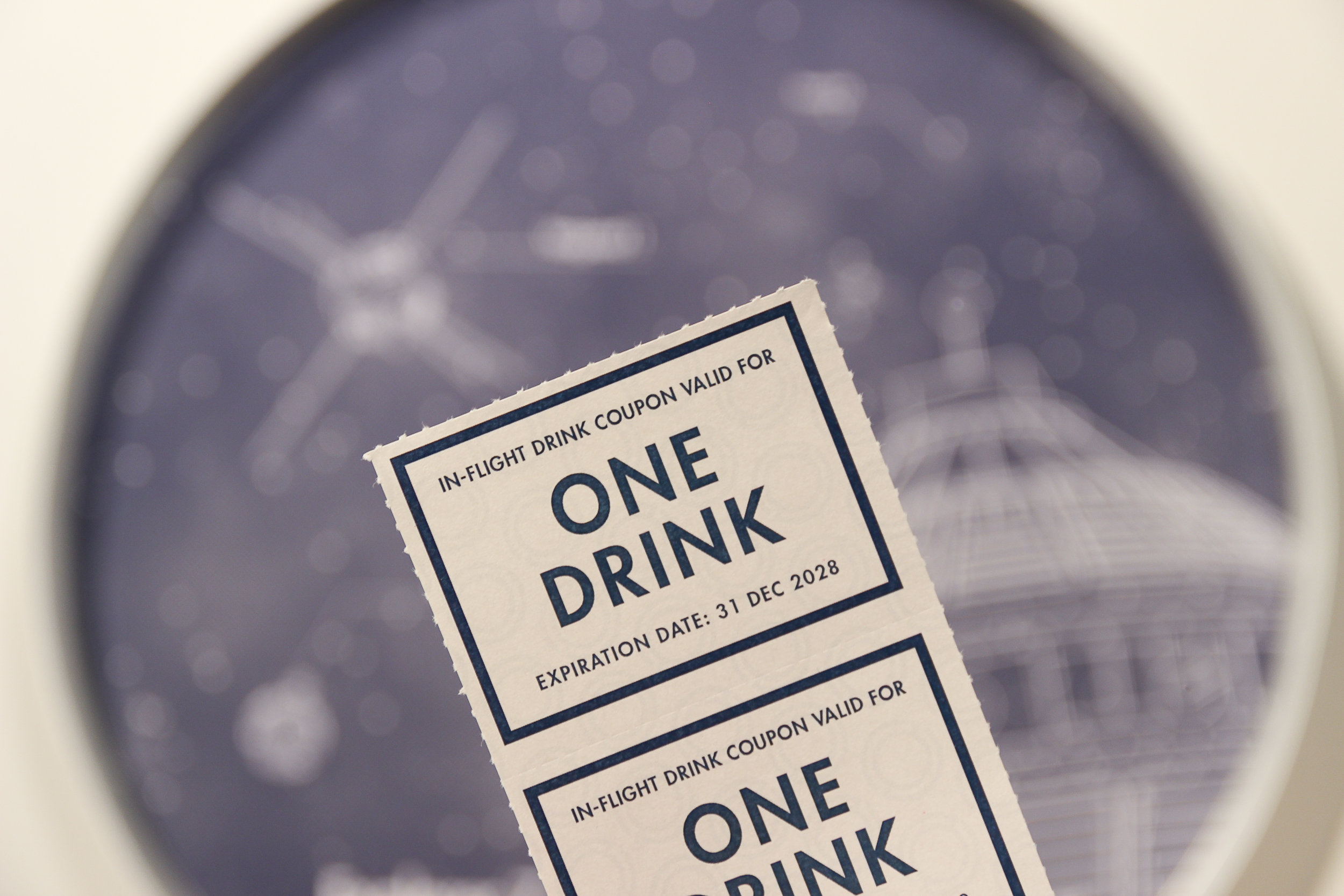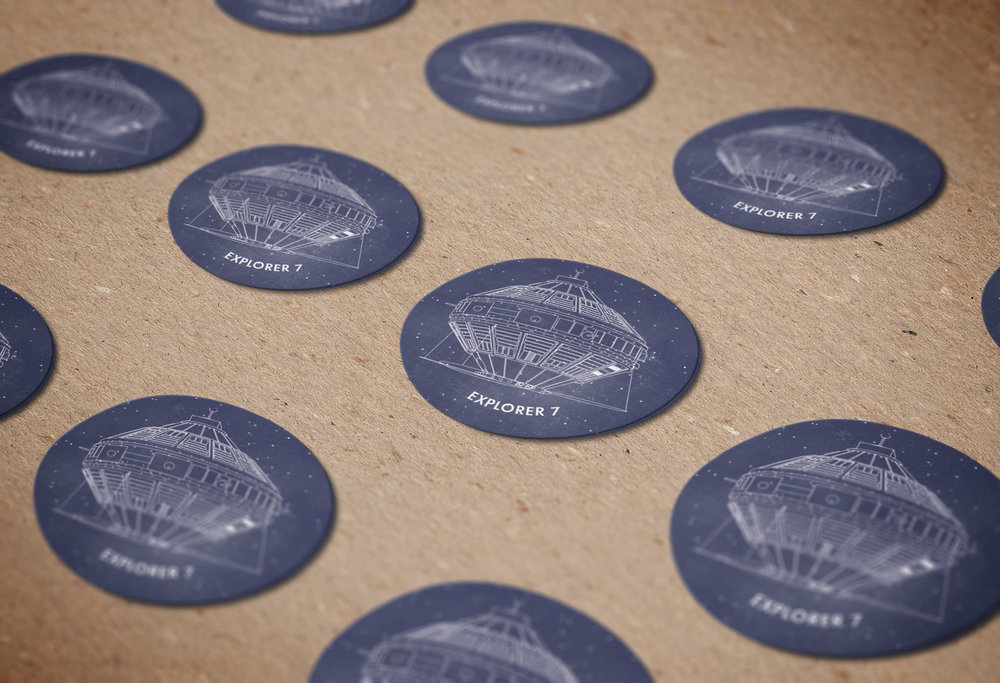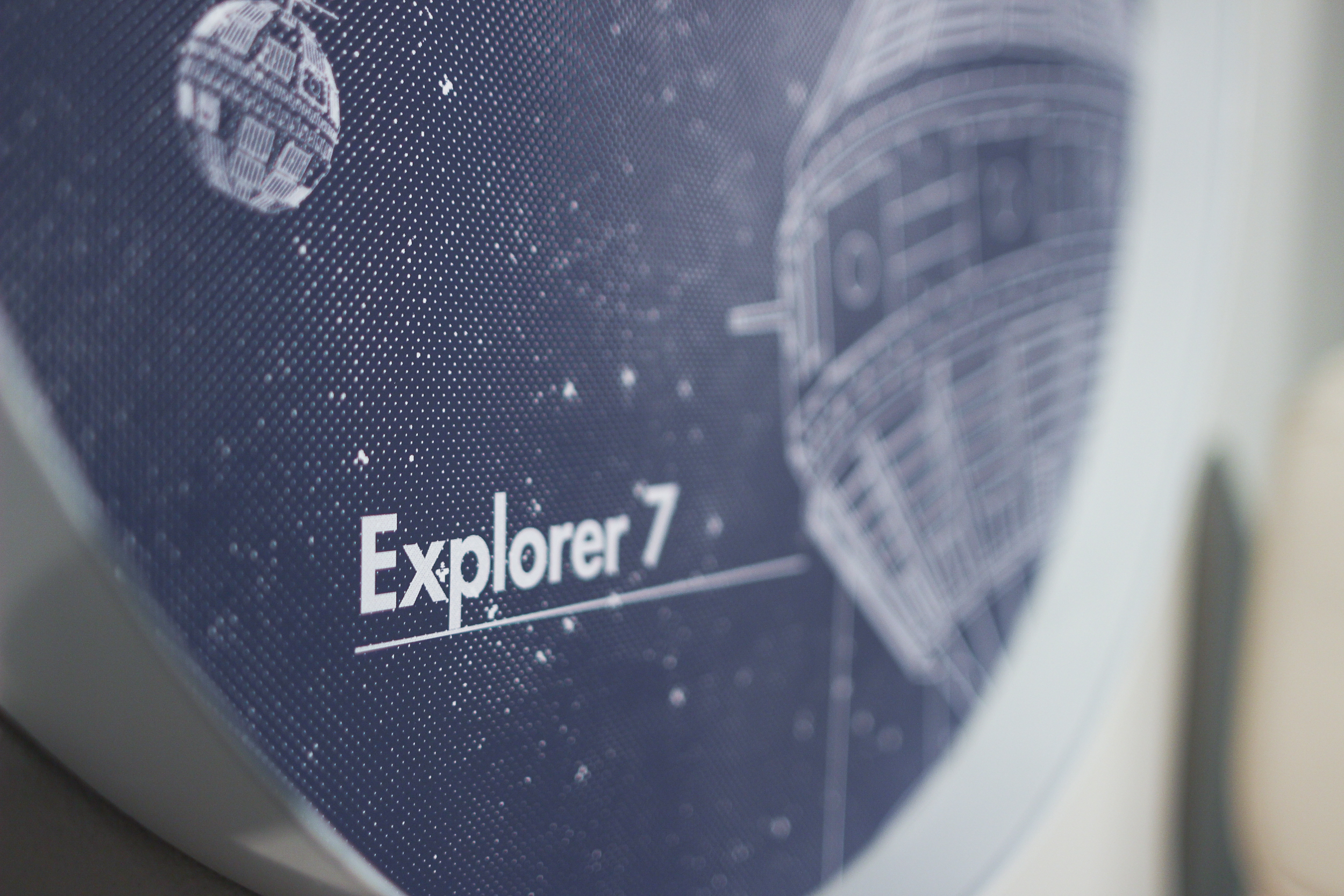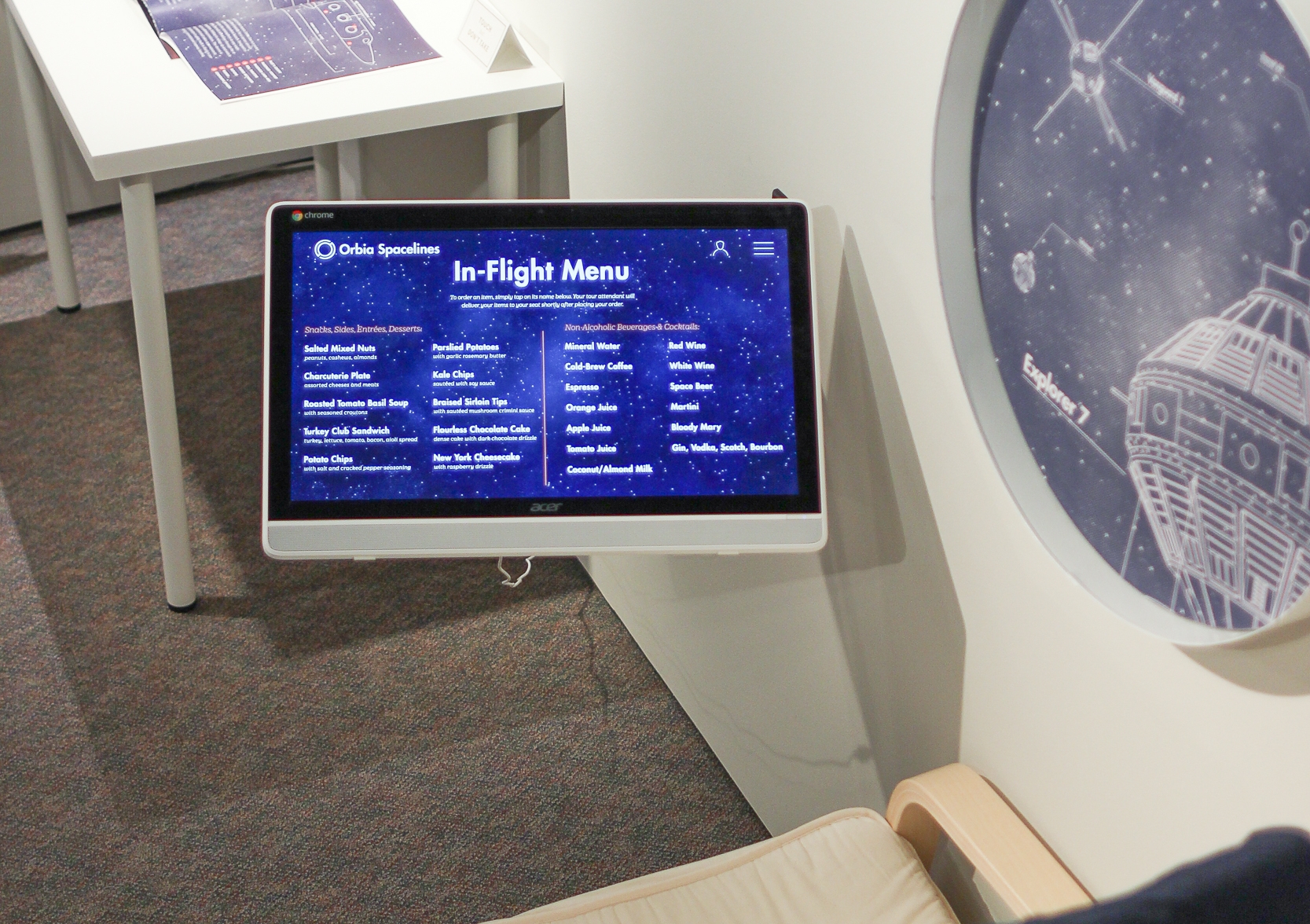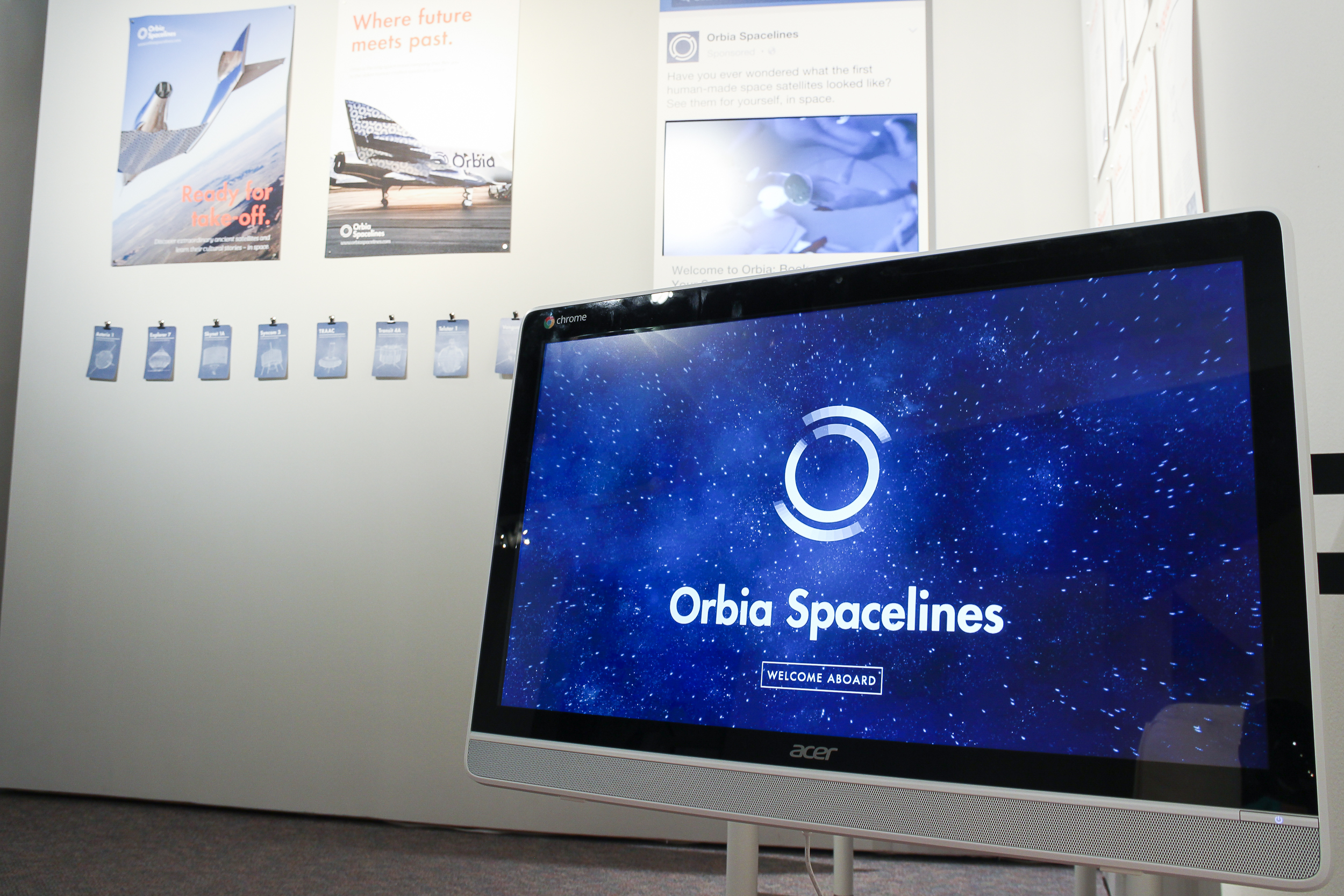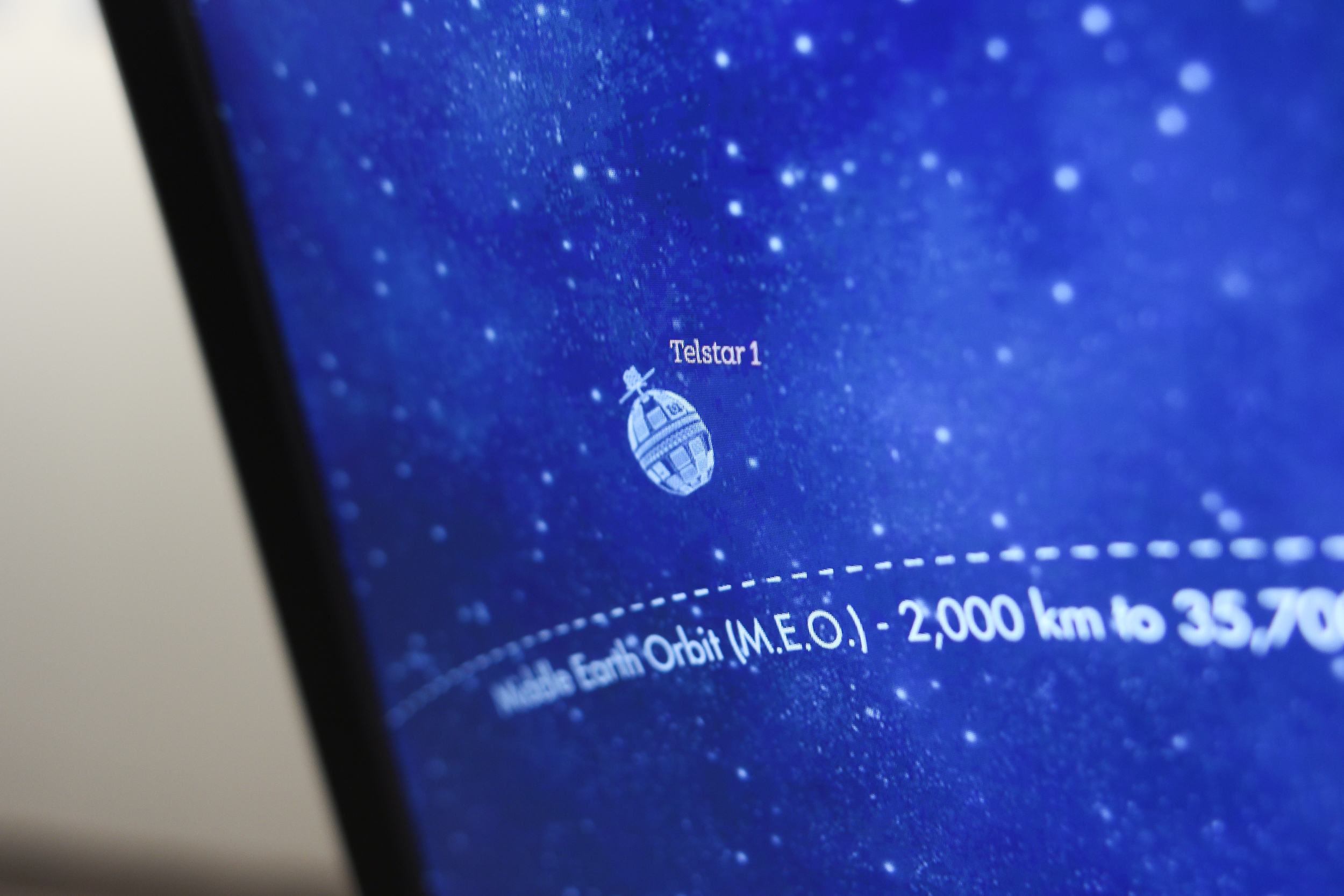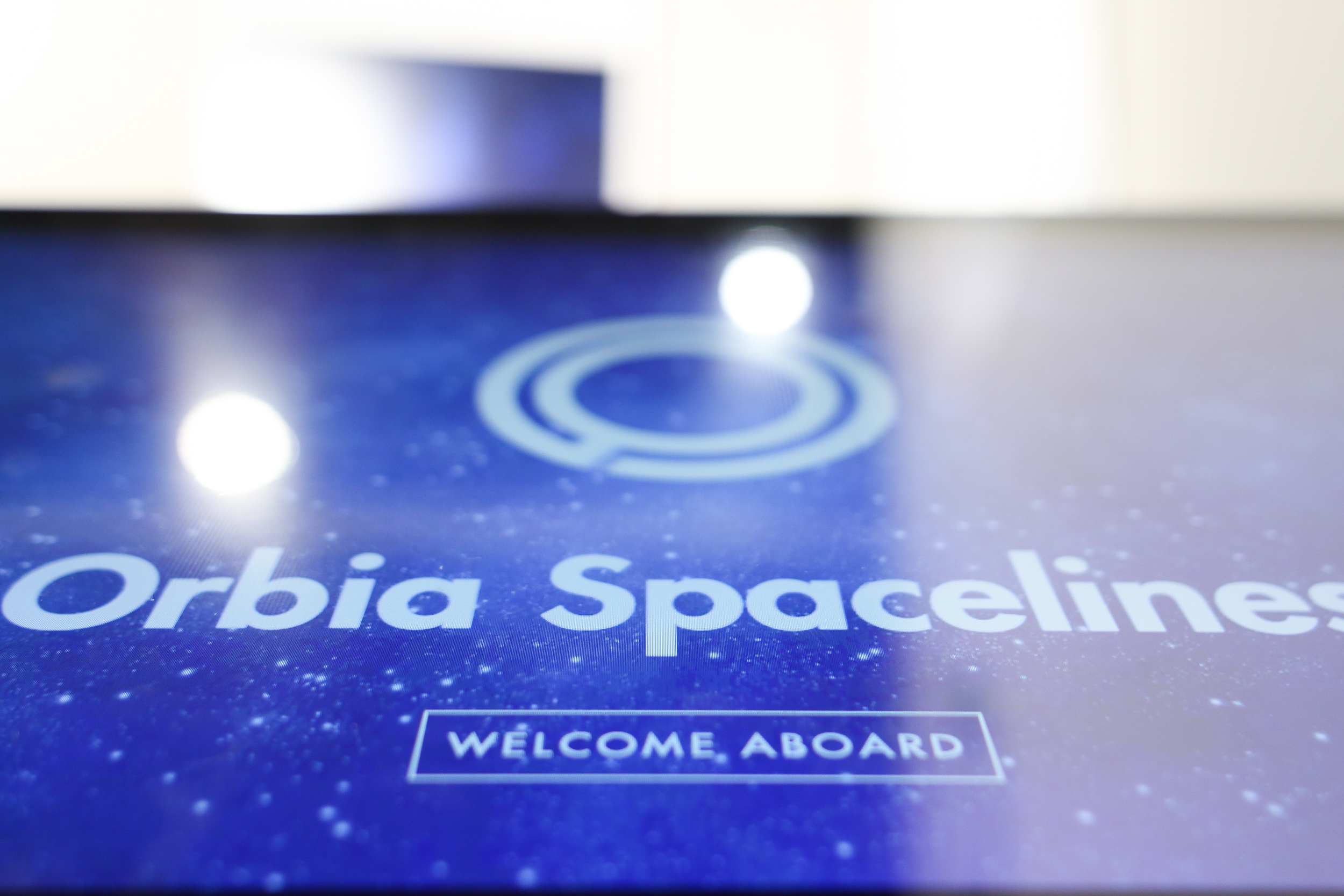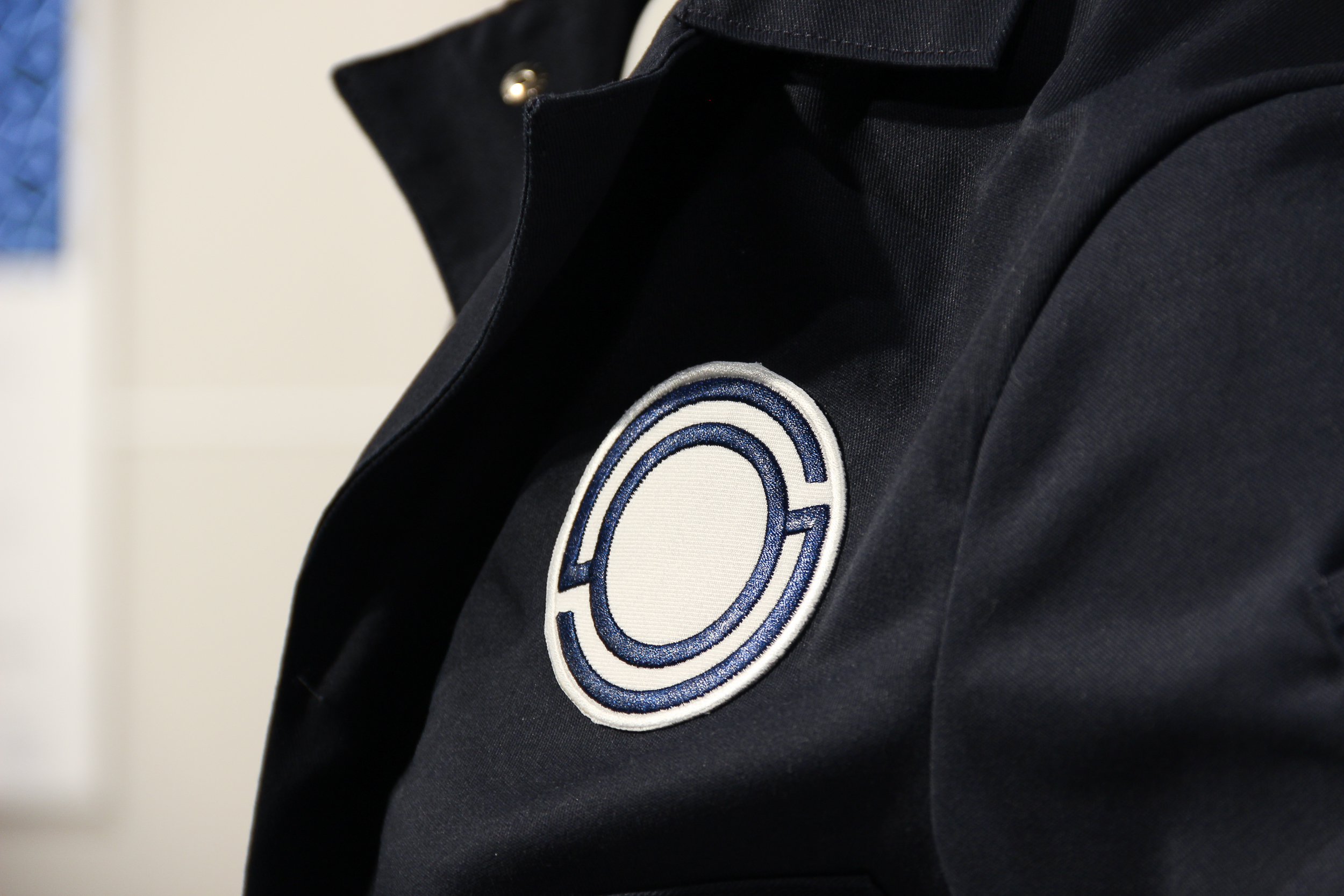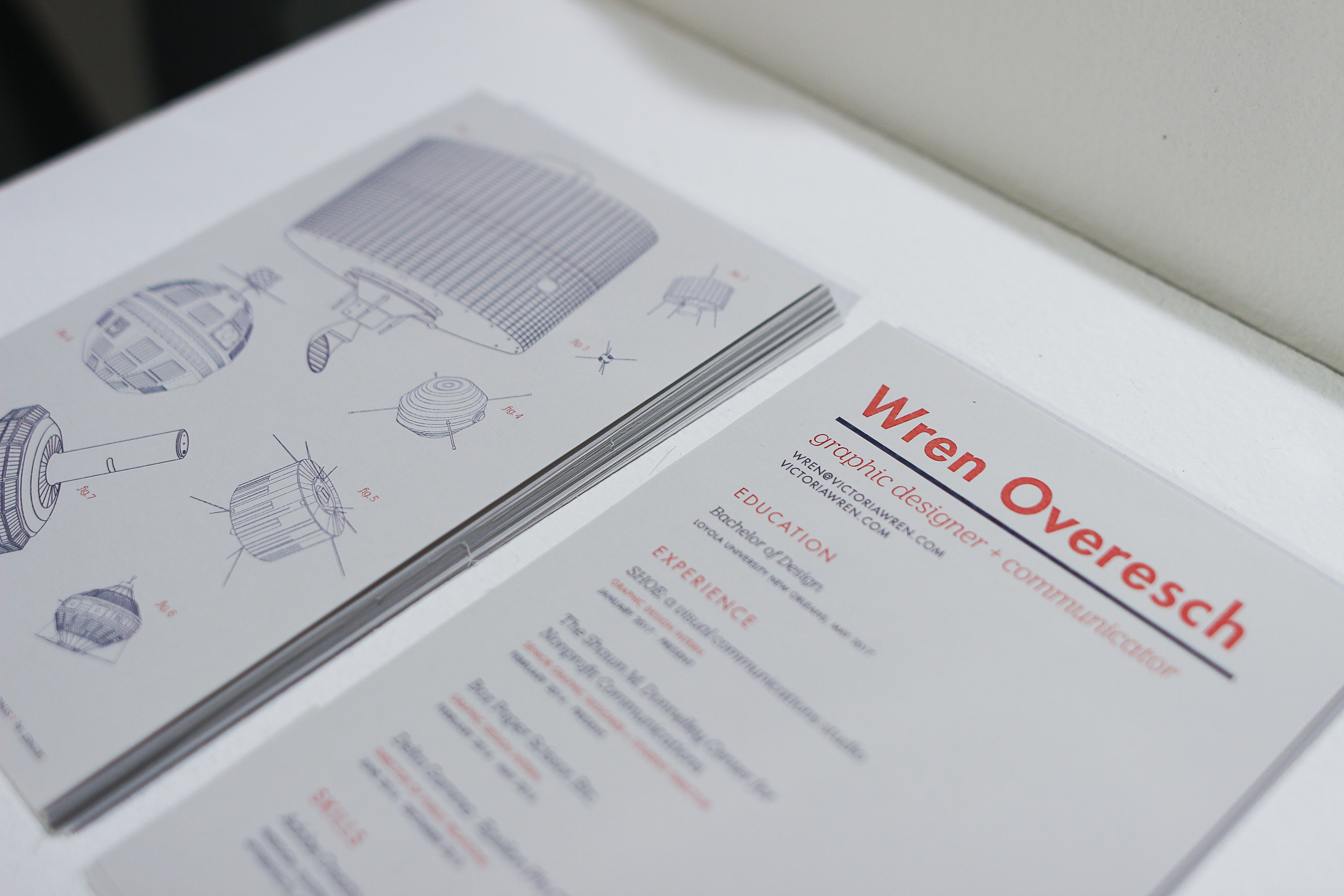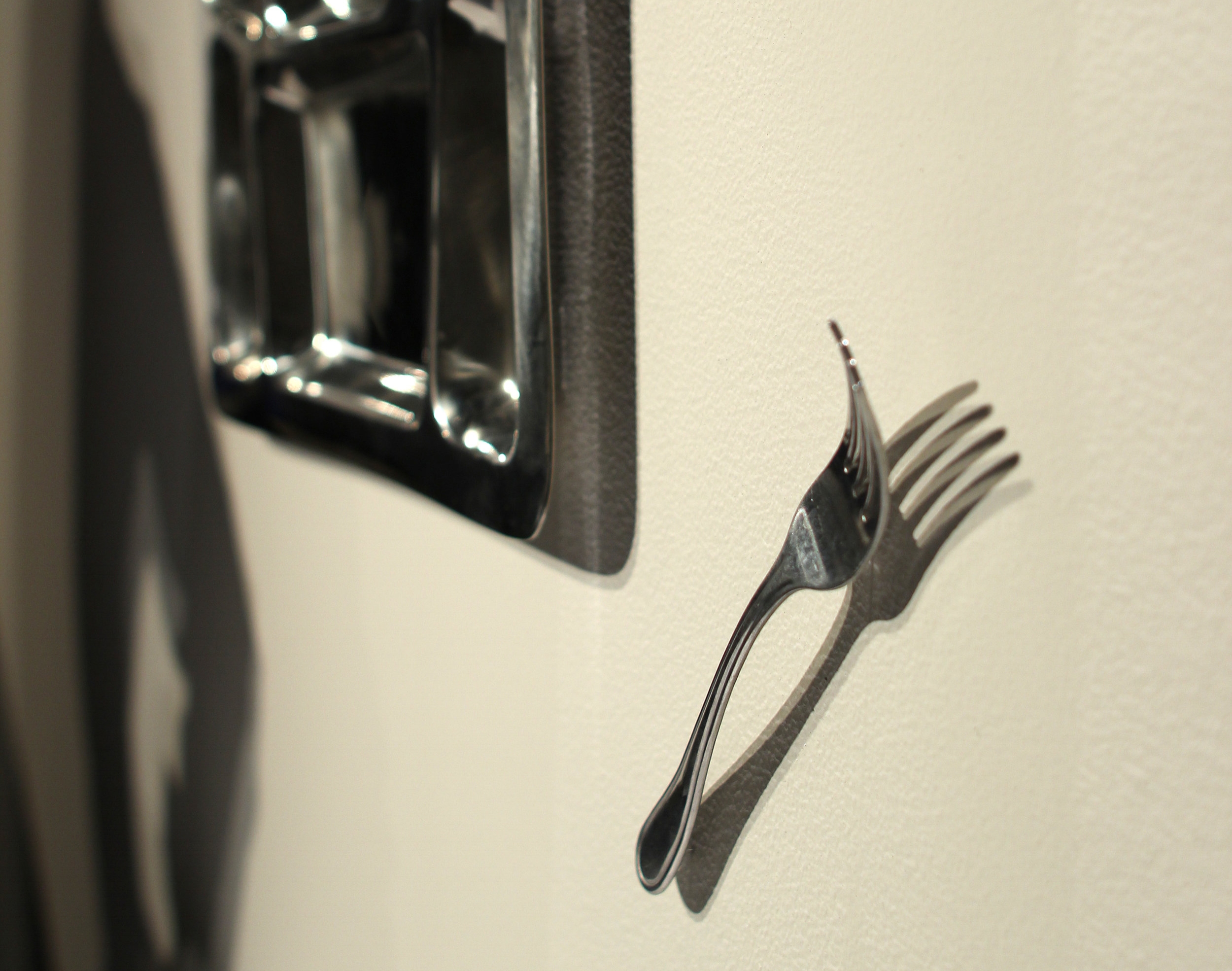Orbia Spacelines
Orbital Debris, Space Archaeology, Branding, Exhibition
capstone senior project exhibition // april 2017
Space junk has become a serious issue and threat for today's astronauts and active space equipment. Many have suggested that we remove all orbital debris, and some believe that the old satellites that are still out in Earth’s orbit should be preserved in space to educate future populations about the first satellites that shaped humanity.
This project fantasizes a future where only true orbital debris has been eradicated from Earth’s orbit, and the veteran satellites have been preserved in space. This hypothetical prediction allows the idea of space tourism in the future to not only become a reality, but also become commercial and affordable. To illustrate this, I chose to curate eight satellites from the 1960s that are still orbiting Earth--learning their stories as I went. To visually depict the curation, I developed and branded a space tourism company (set in the year 2028) that offers commercial space tours to each of these eight satellites. Orbia celebrates the cultural dynamic of the 1960s by bringing that time period to back to life, in the future. This in turn brings attention to the importance of cultural heritage and space preservation, so that future generations are able to learn about early space exploration and the impact on the progression of technology. Orbia diverges from the typical futuristic direction of ‘space-age’ typography and graphics, and instead references older typographic treatments from the 1950s and 1960s. The use of both digital and print become the intersection of where future and past meet.
The capstone exhibit depicts the three stages of the user experience within the company; initial advertising presented to the user by the company, secondary in-depth content that is fetched by the user from the company, and the user experience simulation of a flight/tour in space.
I’d like to give special thanks to Alice Gorman, Senior Lecturer in Archaeology at Flinders University in Australia, to Roman Mars and the '99 Percent Invisible’ team for creating a podcast episode all about space junk which sparked the idea for this topic, to Virgin Galactic for already creating planes that can (almost) go in to space, and to Loyola University New Orleans design professors John Seefeldt, Adam Newman and Daniel Lievens for their time, patience, and wild imagination.
INSPIRATION: PHYSICAL MOOD BOARD
INSPIRATION: PINTEREST BOARD
POSTER ENVIRONMENT APPLICATION:
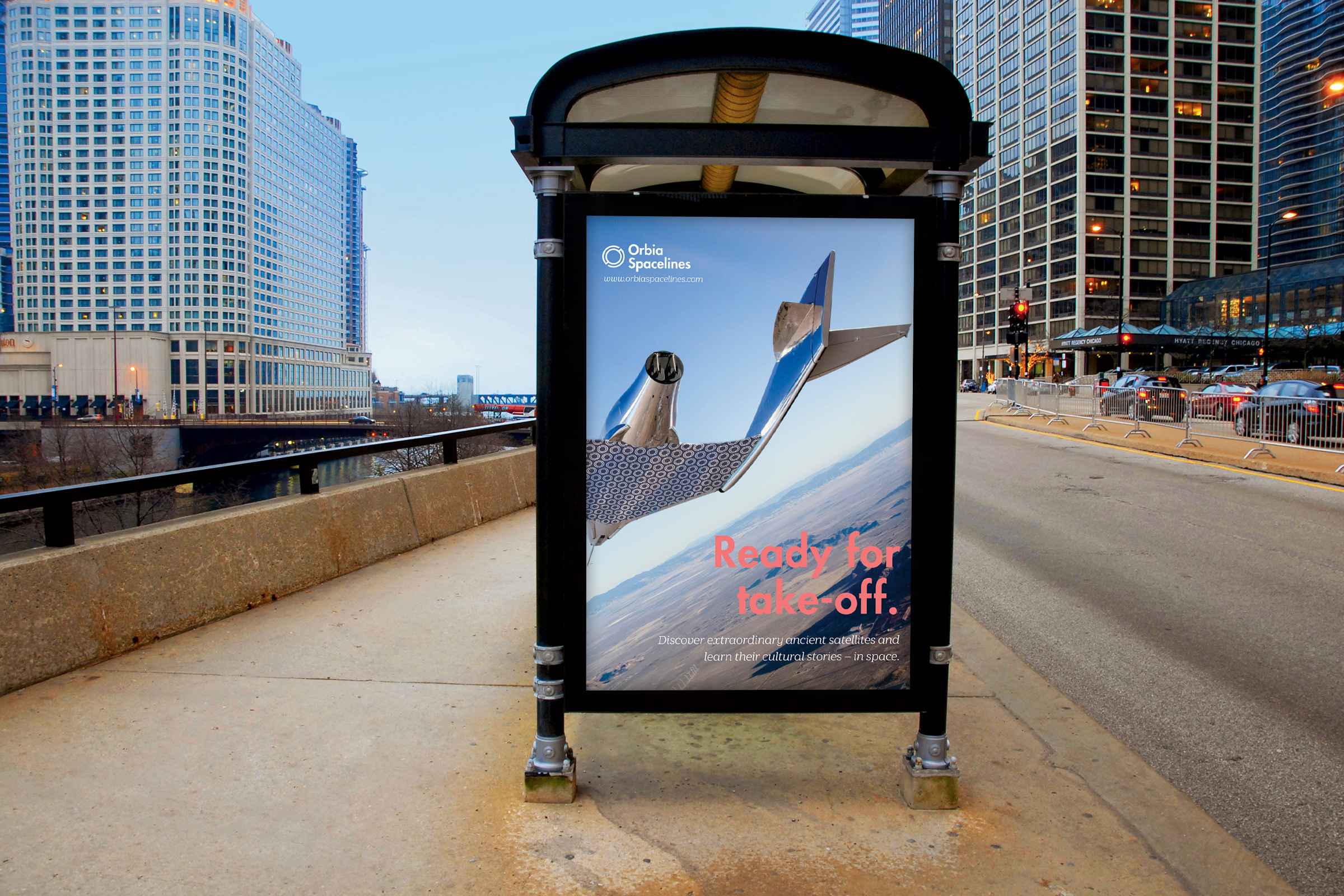
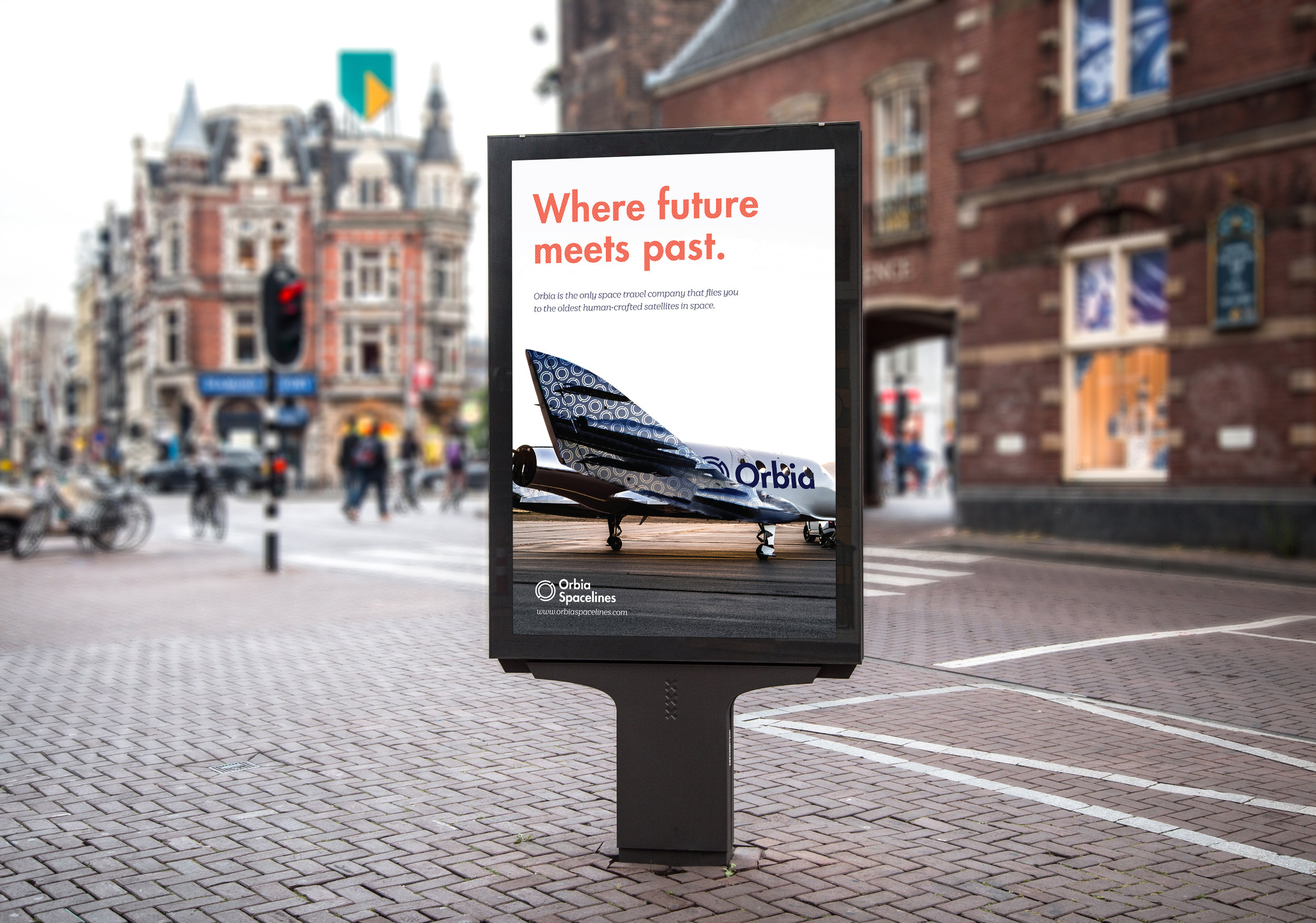
FACEBOOK VIDEO ADVERTISEMENT:
INFORMATIVE MAILER BOOKLET:
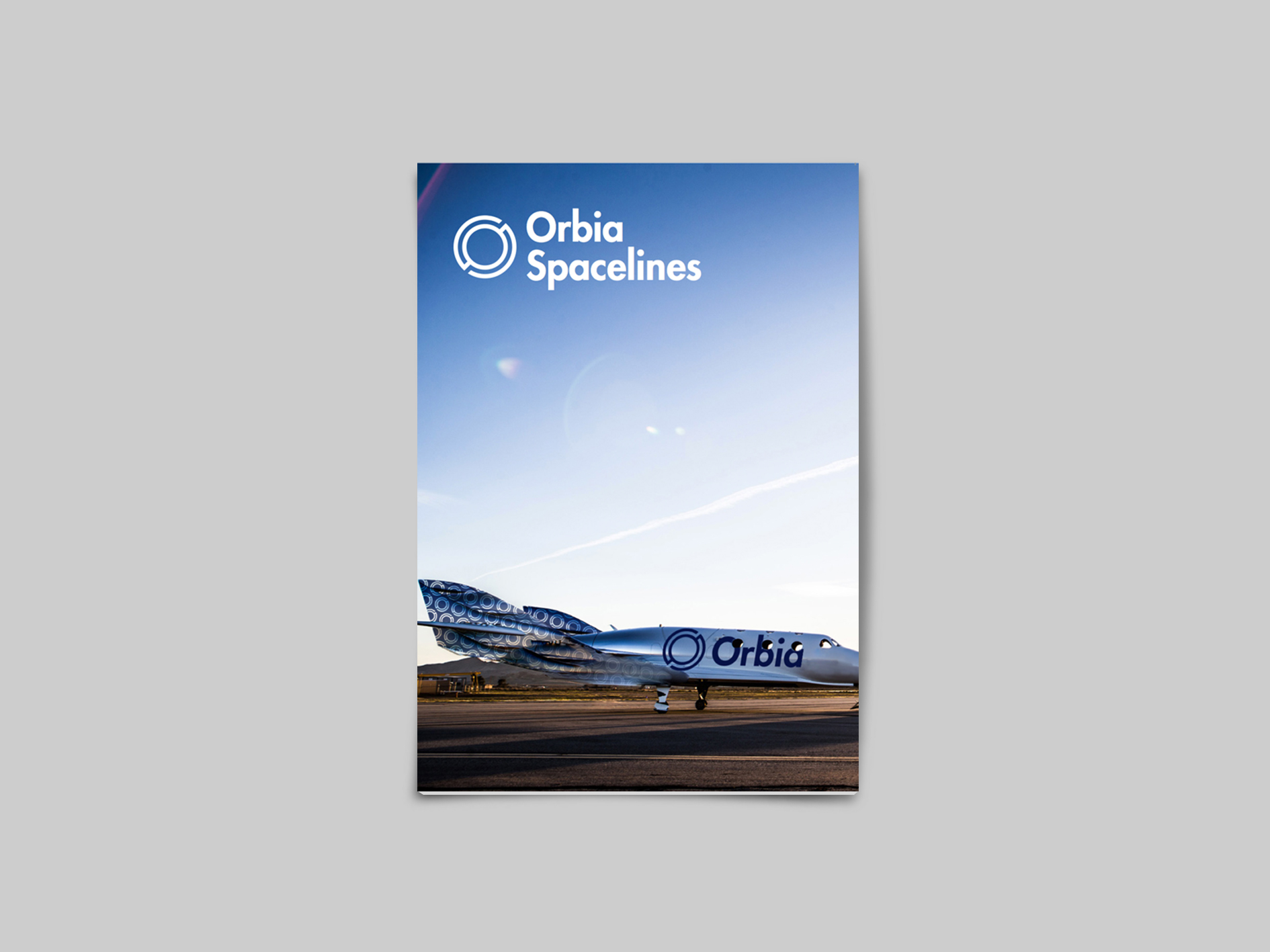
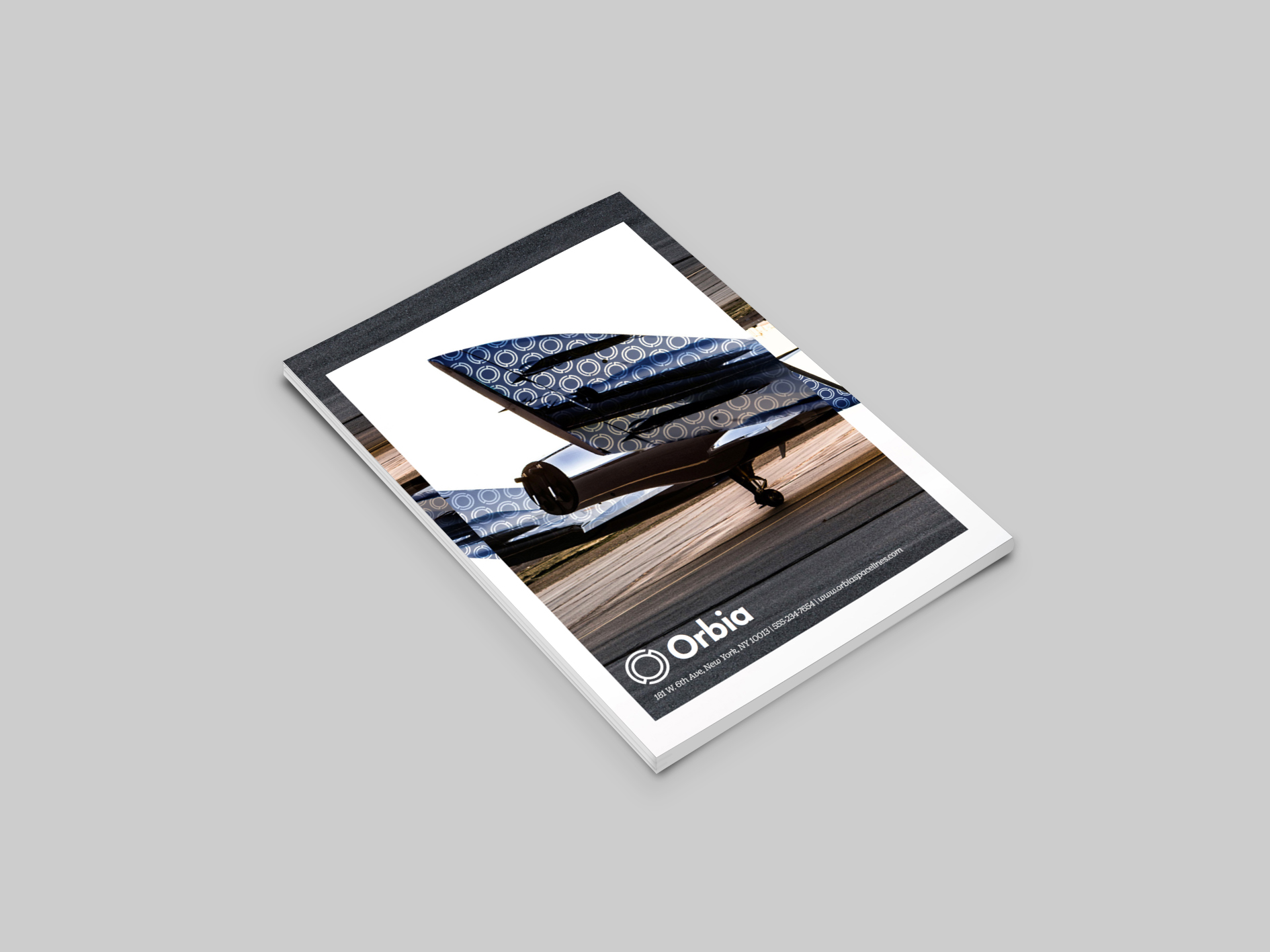
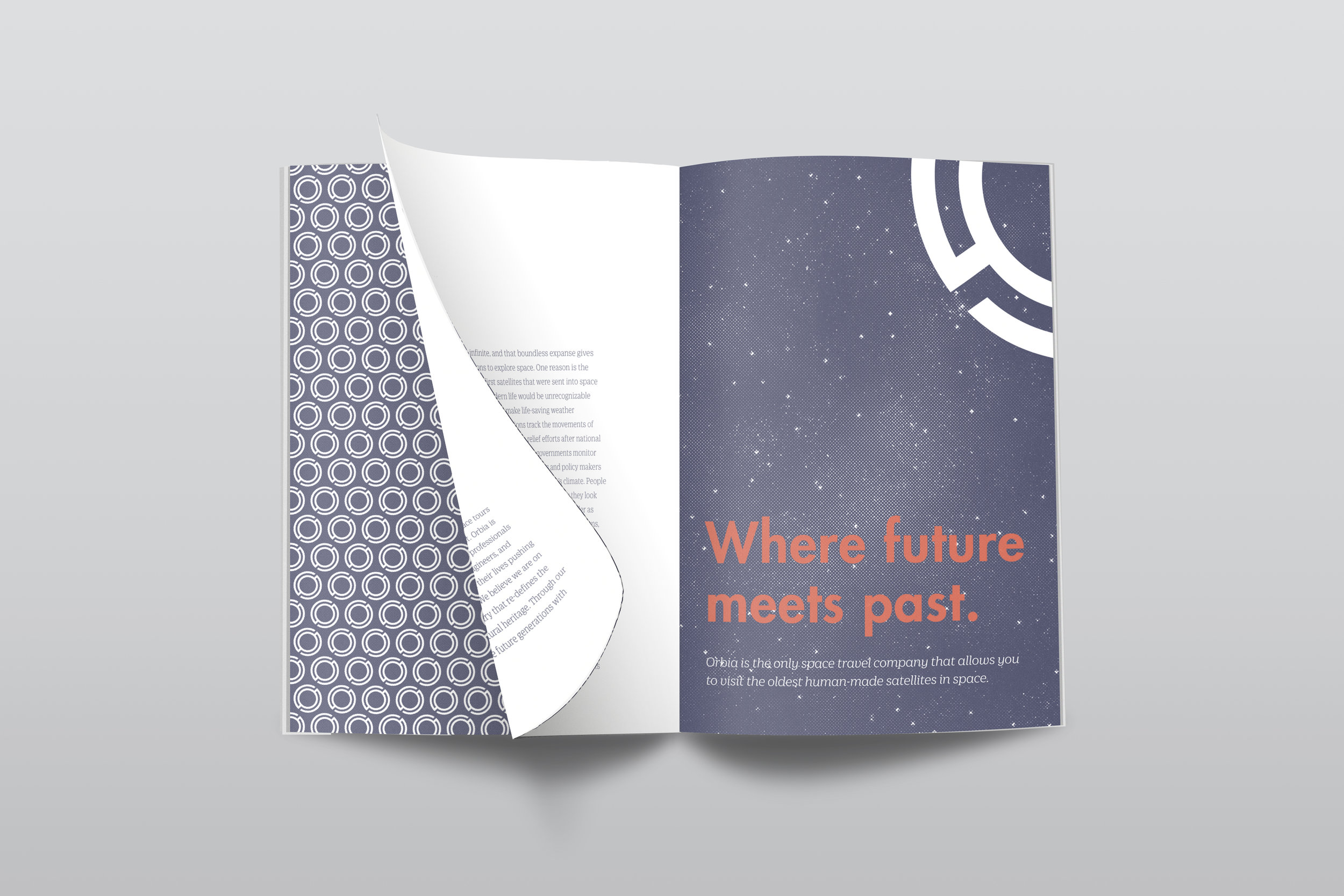
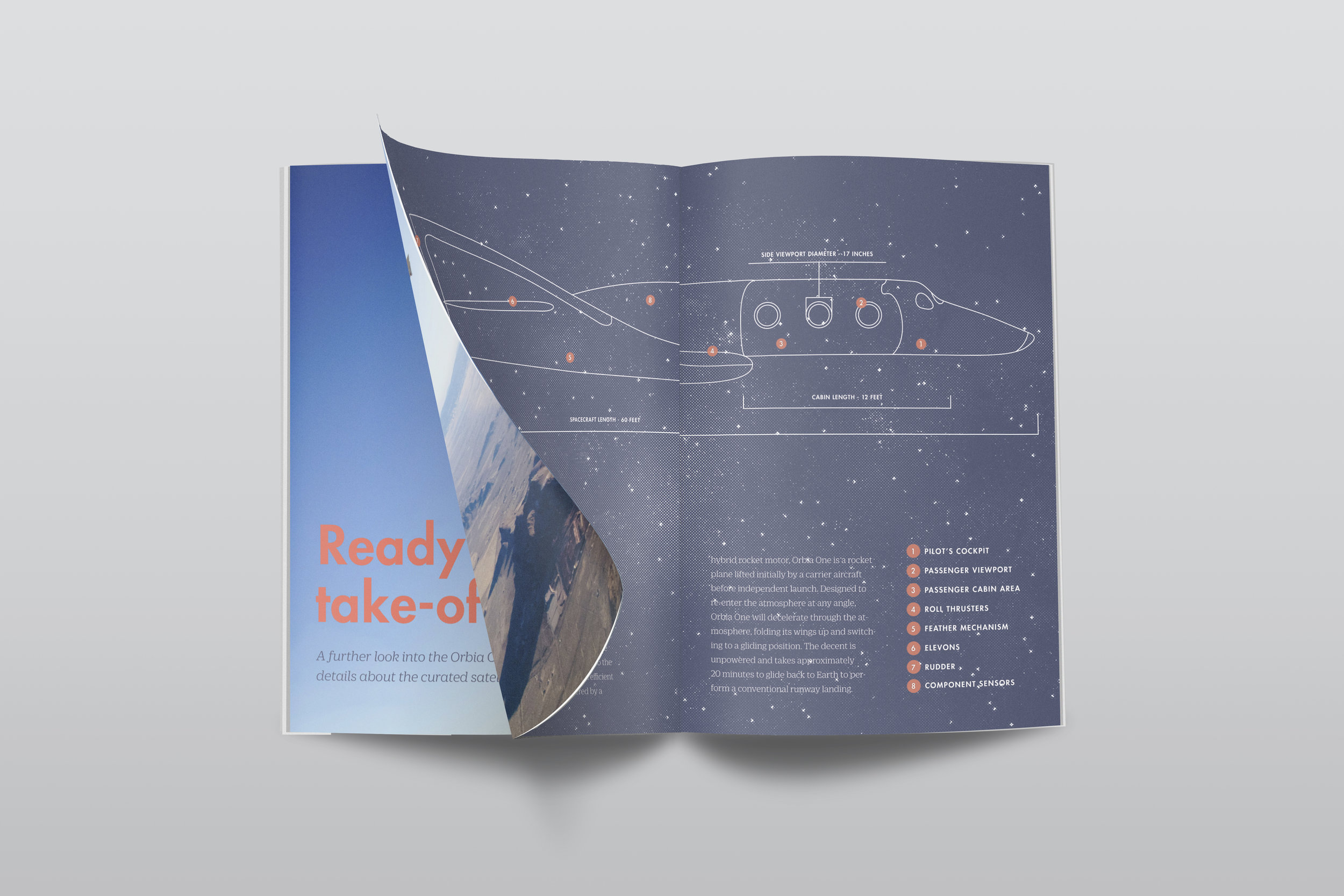
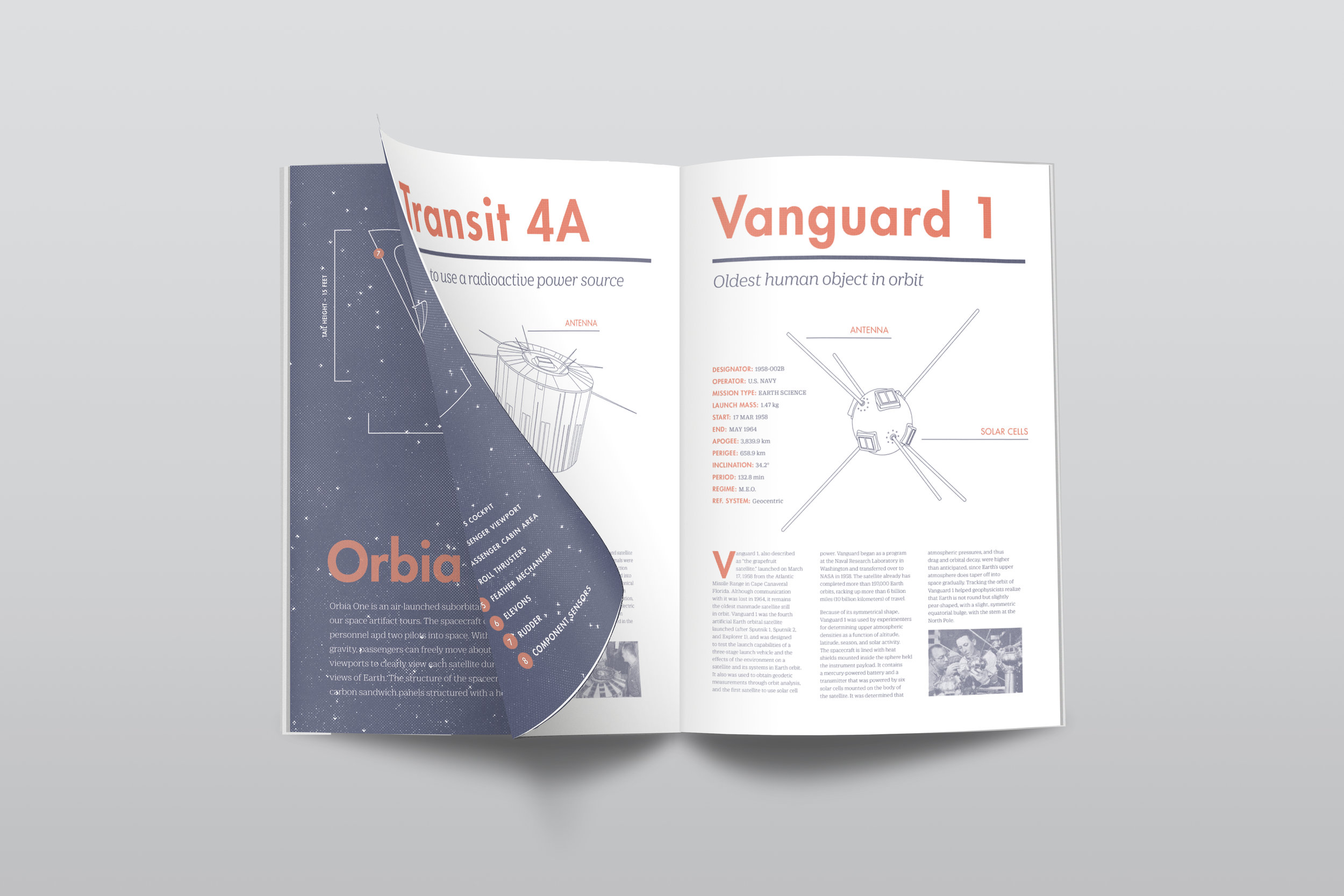
LOYOLA SENIOR DESIGN SHOW EXHIBITION // APRIL 19-26, 2017:
